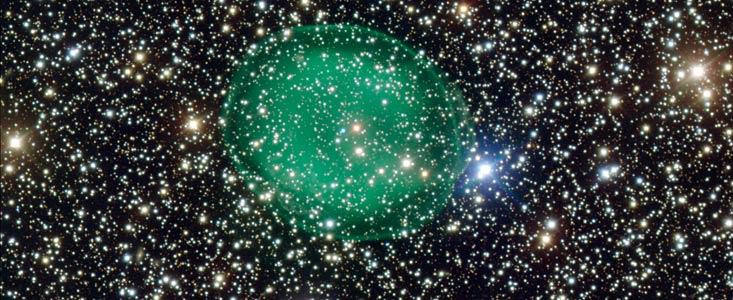The European Southern Observatory’s Very Large Telescope has captured a detailed image of IC 1295, a planetary nebula in the constellation Scutum the Shield.
This glowing green bubble among the stars is made of many layers, which makes it look like a single-celled organism with cell membranes, according to a press release. Actually, the multi-layered gas bubble was created when the star at the center began to die, causing its atmosphere to explode outward in bursts.
A planetary nebula forms when a star about the size of the sun is dying. Its atmosphere blows out into space because of unstable fusion reactions deep inside the star, creating a giant glowing cloud of ionized gas.
Ultraviolet radiation from the star causes the cloud to glow different colors depending on what type of gas it’s made of. This planetary nebula glows pale green because it contains ionized oxygen.
In the center of the green bubble, you can see the small bluish-white spot that used to be the star’s core.
After the gas cloud glows for tens of thousands of years, it will be gone, and only that faint white remnant of the star will be left. This remnant, known as a white dwarf, will spend billions of years cooling down.
The Very Large Telescope, located in Chile, combined images from three separate filters to create this picture of the planetary nebula.
The term “planetary nebula” is slightly misleading because these objects are unrelated to planets. They got their name when astronomers first discovered them and thought they resembled planets like Uranus and Neptune.
Follow EpochTimesSci & EpochTimesSpace on Twitter
Find us on Facebook: www.facebook.com/EpochTimesSci & Youtube: www.youtube.com/EpochTimesSci
Please send any feedback to [email protected]




